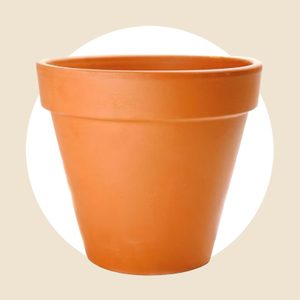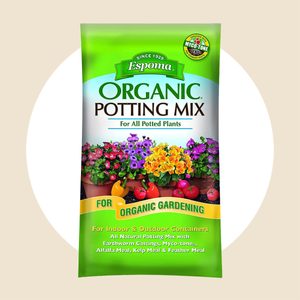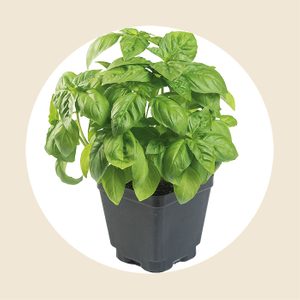How to Grow Basil Indoors and When to Harvest It
Updated: Dec. 19, 2023
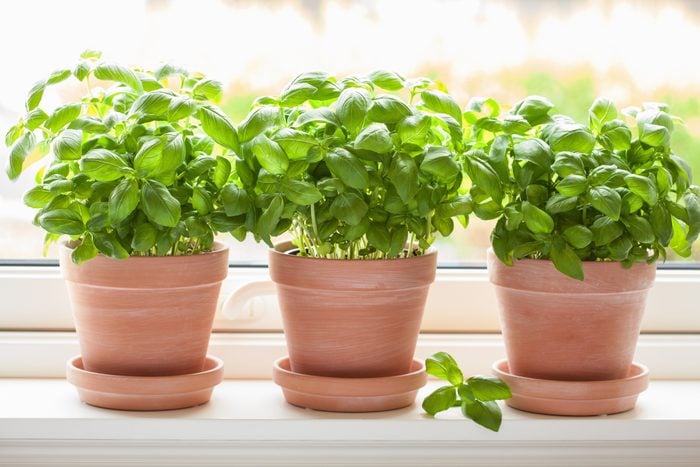
Wondering how to grow basil indoors? A sunny window or an inexpensive grow light combined with a packet of seeds can keep your leaves vibrant and healthy year round even if you don't have a green thumb.
Fragrance and fabulous cooking are two great reasons to learn how to grow basil indoors. A member of the mint family, basil (Ocimum basilicum) is also among the easiest herbs to grow indoors regardless of space and climate. Simply watering will release wafts of fragrant spice in the air. Tender new leaves are perfect for salads and sandwiches, and well-established plants provide year round opportunities for pesto and stellar pasta dishes.
Before you move ahead, check our picks for the best herbs to grow indoors—you just need a sunny window, a planter and some soil.
When to Plant Basil
Lucky for all of us, basil can be planted indoors any time of year. The more relevant question is where in your home to plant this sun-loving herb. Basil most likely originated in India but has come to be associated with Mediterranean and Asian cuisines. It’s a good reminder that this “king of herbs” loves bright light and your sunniest window. Six hours of direct sun is considered the minimum for healthy growth.
How to Grow Basil Indoors
A simple trip to a nursery or a big box store (whether in-store or online) can yield everything you need for growing basil indoors. Knowing a bit about the various varietals helps avoid fresh basil cooking mistakes.
What You’ll Need
- Pot with a drainage hole: A 6-inch or larger terracotta, ceramic or plastic container can give plenty of space for seed starting as long as there is a substantial drainage hole.
- Potting mix: Look for potting mix with plenty of organic material to help with drainage, moisture retention and nutrients.
- Seeds: Shop for commonly available sweet basil (sometimes simply called basil) or Genovese basil for Italian cooking. Other varieties with distinct leaves and flavor profiles include Thai, purple and lemon basil.
Directions
Step 1: Fill your pot
Fill the container with potting mix within an inch of the top. Add water, making sure to dampen the soil throughout. Top with additional potting mix and dampen if it settles too deeply.
Step 2: Add seeds
Evenly sprinkle a pinch or two of seeds across the wet potting mix.
Step 3: Cover with more soil
Lightly cover the seeds with more potting mix and dampen. The seeds will be undetectable.
Step 4: Set under the sun
Place in a warm room at a sunny window. Seeds may take up to 14 days to germinate. Water weekly or when soil becomes dry.
Step 5: Thin out plant
When seeds have sprouted their second or third set of leaves, it’s time to thin out plants that are growing closely together. Remove one of the nearby shoots by cutting just above the soil line rather than risk disturbing the roots by pulling. Use the tender shoots for dinner.
Alternatively, let all the plants grow until the stems are sturdy, cut one of the neighbors near the base and remove a couple inches of lower leaves. Let the detached stems sit in water on a sunny window ledge and new roots will sprout. Water-rooted basil can remain in water or be planted. Check out our guide for growing mint indoors.
When to Harvest Basil
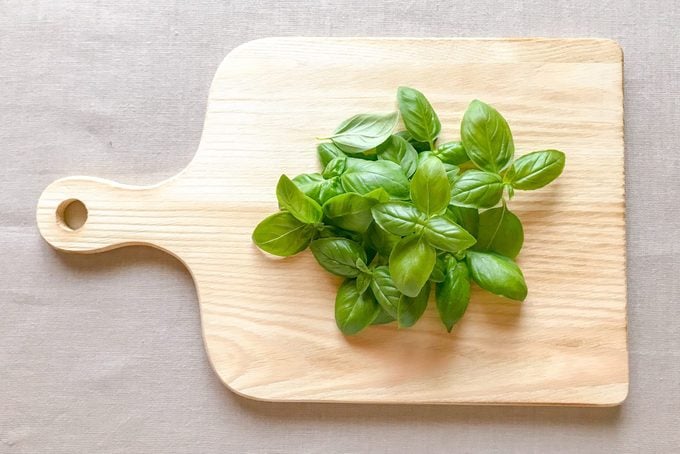
The best part of edible indoor gardening comes at harvest time. Basil can be picked any time, but allowing the plants to grow several inches with more leaves ensures a strong plant. Despite temptation, avoid picking individual larger leaves at the bottom of the plant—your basil will thank you. Rather, find a grouping of smaller leaves at the top, and trim just above the leaf cluster below.
When you need lots of basil, cut a larger section of the stem with a sharp pruning shear or scissors above a leaf nodule to encourage branching and ultimately more basil. When new leaves are established on a cut basil stem, you can start the process again.
Tips for Growing Basil Indoors
What indoor temperature should basil grow at?
Basil prefers warmer air. In addition to placing plants in a sunny window, try to keep temperatures at 70°F or above. Avoid exposure to sudden chills.
When should you repot your basil?
When white roots emerge through the drainage hole in the container or the soil dries out really quickly, it is time to repot. Select a container that’s at least two inches larger in diameter, fill it with potting mix, and make a deep hole to transfer the plant. Untangle deeply twisted roots if needed (it’s fine if some break). Place in the hole, backfill the edges, and water the plant.
Cutting an inch or two from the top above a pair of leaves can promote new growth and provide better flavor for all of those basil recipes you have planned.
What are the lighting requirements for basil?
Indoor plants tend to lean toward their light source. Give the pot a quarter turn every week or so to maintain an evenly growing plant.
In terms of artificial lighting, basil isn’t too fussy. It can germinate and thrive under most light from simple light strips to artificial grow systems. Keep them two to four inches away from the light source, and avoid letting the leaves touch the bulb.
When should you prune basil?
Learning how to prune herbs is key to their health and longevity. For basil, whether indoors or out, that means cutting off the flowers before they peak and snipping three to four inches from the top above a leaf nodule.

